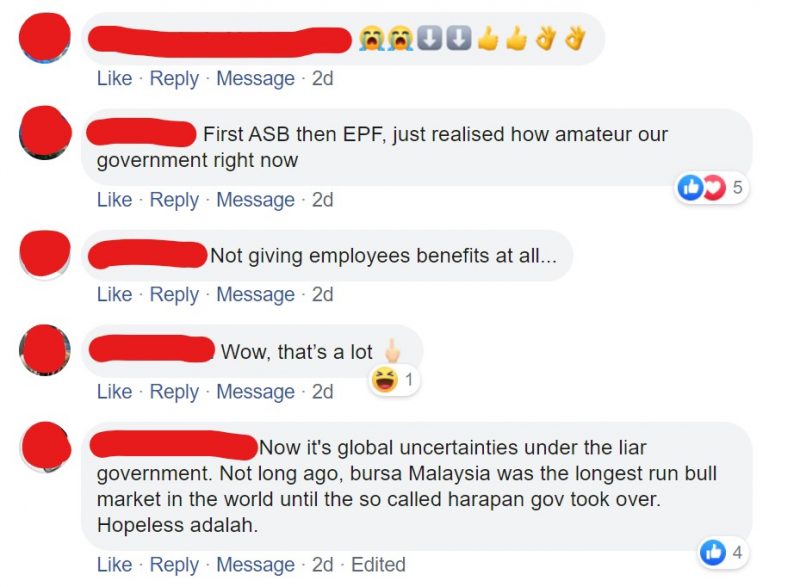Lower EPF Dividend Rate: What The Expert Says

Table of Contents
Malaysians were already bracing for modest dividends from Employees Provident Fund (EPF), for 2019. When Permodalan Nasional Bhd (PNB) declared its lowest ever dividend of 5.5% for ASB last year, speculations run amok on how low EPF dividend rate would be.
Despite this, Malaysians were still taken aback when the dividend rate for conventional savings plummeted to 5.45%, the lowest dividend rate declared since 2008. Meanwhile, the declared dividend for Simpanan Shariah is 5%.
Deriving 55% of its income from investment in equities, EPF places a substantial portion of its funds out of the country. Hence, despite modest returns from investments within the country, EPF was able to make up for the underperforming local investments.
What happened this time?
Here’s what EPF’s chief executive officer Alizakri Alias said:
“Certainly 2019 exemplified what it means to be living in a VUCA (Volatile, Uncertain, Complex and Ambiguous) world. Many issues in the global markets remained unresolved, but we also saw some new issues cropping up. There were three rate cuts made by the US Federal Reserve, the US-China trade spat escalated and continues to be unresolved, and there were surrounding the Brexit negotiations.
“On top of this, we did not expect the Hong Kong protests to be prolonged and that certainly added pressure on an already fragile far-east market.”
He also urged the rakyat to not compare the dividends for 2019 to the payouts given a decade ago due to the differences in the environment then and now.
Some of the factors that led to the lower dividend in 2019 are:
- Capital markets were affected by the US-China trade war
- Malaysia’s stagnating property cycle
- Lower interest rates that caused yields from fixed income instruments such as government bonds to drop
- Bursa Malaysia’s leading index FBMKLCI was down 4.7% at the end of 2019 compared to the beginning
- The Brexit debacle
- Prolonged Hong Kong protest
Another factor is the size of the EPF fund today.
The fund had grown to RM864.7 billion at the end of October 2019, compared to RM344.6 billion in 2008. What this means is that EPF requires RM9 billion to pay every 1% dividend today.
As a comparison, the RM47.3 billion that was needed to declare 6.15% conventional dividend last year would have translated to a double-digit 14.9% dividend back in 2008.
While analysts had already forecasted the dividend rate to come in below 6%, the reality was still disappointing to EPF members.
Mixed emotions from the rakyat
Once EPF made an announcement via a post in their official Facebook account, Malaysians flocked to social media with their comments.
Some commended EPF for doing their best despite the fragile investment scene globally, while some are worried about their retirement fund. Some even blame the new government for the low dividend payout.




We, at iMoney also received some interesting comments from our readers.

What the expert says?

Felix Neoh, Director (Financial Planning) at Finwealth Management Sdn. Bhd. spoke to iMoney on what we can do about EPF’s lower dividend payout.
A: For the majority of contributors (in the accumulation phase) who are still actively working and contributing, the long-term effect is that the compounding returns of their retirement savings will be less. The impact of a one-year lower performance will not be as pronounced in the long term as compared to a long- term downward trend (should this low dividend rate continue over a long period).
For retired members who still maintain their savings with EPF and depend on the dividend as a means of funding their annual retirement expenses, they will have less money to spend this year. So, adjustments to the retirement lifestyle might be required if the EPF funds are the main source of retirement income. If you’re able to do so, consider part-time work to supplement the income or look for other investment opportunities to generate a higher overall return to meet your retirement funding needs.
At the end of the day, 5 or 5.45% is still much better than what can be earned from most savings or fixed deposits while riskier investments may get you higher returns but offer none of the security that you get with EPF.
However, as highlighted by the analyst, it is advisable to not be fully dependent on EPF as the only source of your retirement funding.











